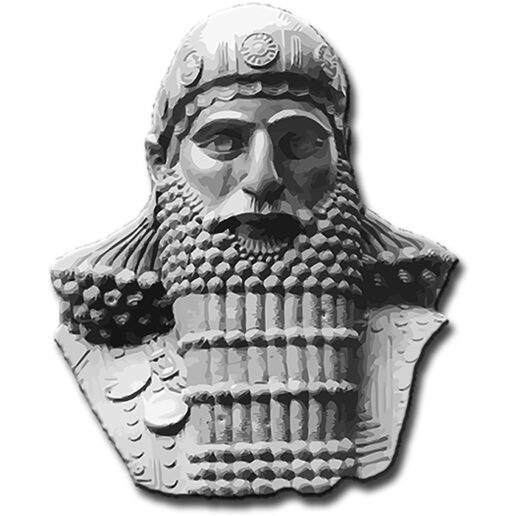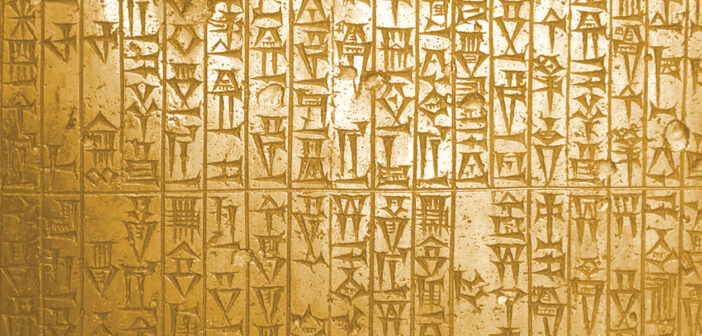“If any one steal cattle or sheep, or an ass, or a pig or a goat, if it belong to a god or to the court, the thief shall pay thirtyfold therefor; if they belonged to a freed man of the king he shall pay tenfold; if the thief has nothing with which to pay he shall be put to death.”
– Law 8, Code of Hammurabi.
 Written between 1755-1750 BC in Babylon, the Code of Hammurabi is one of the earliest and most famous examples of early law. The definition of law is fluid but may be defined as a set of rules that are created and enforceable by social or governmental institutions to regulate behavior. The development of law mirrors the development of civilization itself. Ancient Egyptian law dates back to 3000 BC and its pronouncements are based upon the concepts of truth, harmony, order, morality and justice. The first known law “code” was started in approximately 2200 BC by Sumerian King Ur-Nammu. It consisted of simple “if … then …” statements, usually doling out harsh consequences for those who deigned to “break” the law. When Hammurabi came to power around 1760 BC, he built upon the statements made by Ur-Nammu by adding to, codifying and inscribing them in stone. The 282 “laws” are now known as the famous Code of Hammurabi.
Written between 1755-1750 BC in Babylon, the Code of Hammurabi is one of the earliest and most famous examples of early law. The definition of law is fluid but may be defined as a set of rules that are created and enforceable by social or governmental institutions to regulate behavior. The development of law mirrors the development of civilization itself. Ancient Egyptian law dates back to 3000 BC and its pronouncements are based upon the concepts of truth, harmony, order, morality and justice. The first known law “code” was started in approximately 2200 BC by Sumerian King Ur-Nammu. It consisted of simple “if … then …” statements, usually doling out harsh consequences for those who deigned to “break” the law. When Hammurabi came to power around 1760 BC, he built upon the statements made by Ur-Nammu by adding to, codifying and inscribing them in stone. The 282 “laws” are now known as the famous Code of Hammurabi.
 The Code was copied, written in Akkadian, and inscribed throughout the Kingdom of Hammurabi with the most complete example inscribed upon a basalt stele being held in the Louvre Museum in France. It begins with a prologue establishing Hammurabi’s authority over all matters of law and the reasons for the creation of the law which includes “to destroy the wicked and evil doers” and “so that the strong should not harm the weak.” What follows are 282 statements of infractions and their penalties, usually extremely harsh, from different aspects of society such as property, land/homes, commerce, marriage/family, assault, agriculture, and others. Examples include “If any one store corn in another man’s house he shall pay him storage at the rate of one gur for every five ka” and “If a man take a wife, and she be seized by disease, if he takes a second wife, he shall continue to support his first wife for as long as she lives.” The Code ends with an epilogue that again establishes Hammurabi’s backing of the gods and his ultimate authority.
The Code was copied, written in Akkadian, and inscribed throughout the Kingdom of Hammurabi with the most complete example inscribed upon a basalt stele being held in the Louvre Museum in France. It begins with a prologue establishing Hammurabi’s authority over all matters of law and the reasons for the creation of the law which includes “to destroy the wicked and evil doers” and “so that the strong should not harm the weak.” What follows are 282 statements of infractions and their penalties, usually extremely harsh, from different aspects of society such as property, land/homes, commerce, marriage/family, assault, agriculture, and others. Examples include “If any one store corn in another man’s house he shall pay him storage at the rate of one gur for every five ka” and “If a man take a wife, and she be seized by disease, if he takes a second wife, he shall continue to support his first wife for as long as she lives.” The Code ends with an epilogue that again establishes Hammurabi’s backing of the gods and his ultimate authority.
When it came to foreign policy, King Hammurabi was a brutal and unmerciful tyrant; but at home he considered himself the “people’s shepherd” and worked to maintain order and harmony using the law as he had established it. The Code of Hammurabi provides details as to what it took to maintain an ordered society in a chaotic and brutal world. Today’s law looks to do the same.





